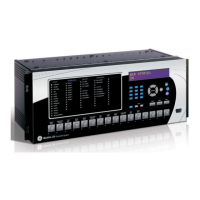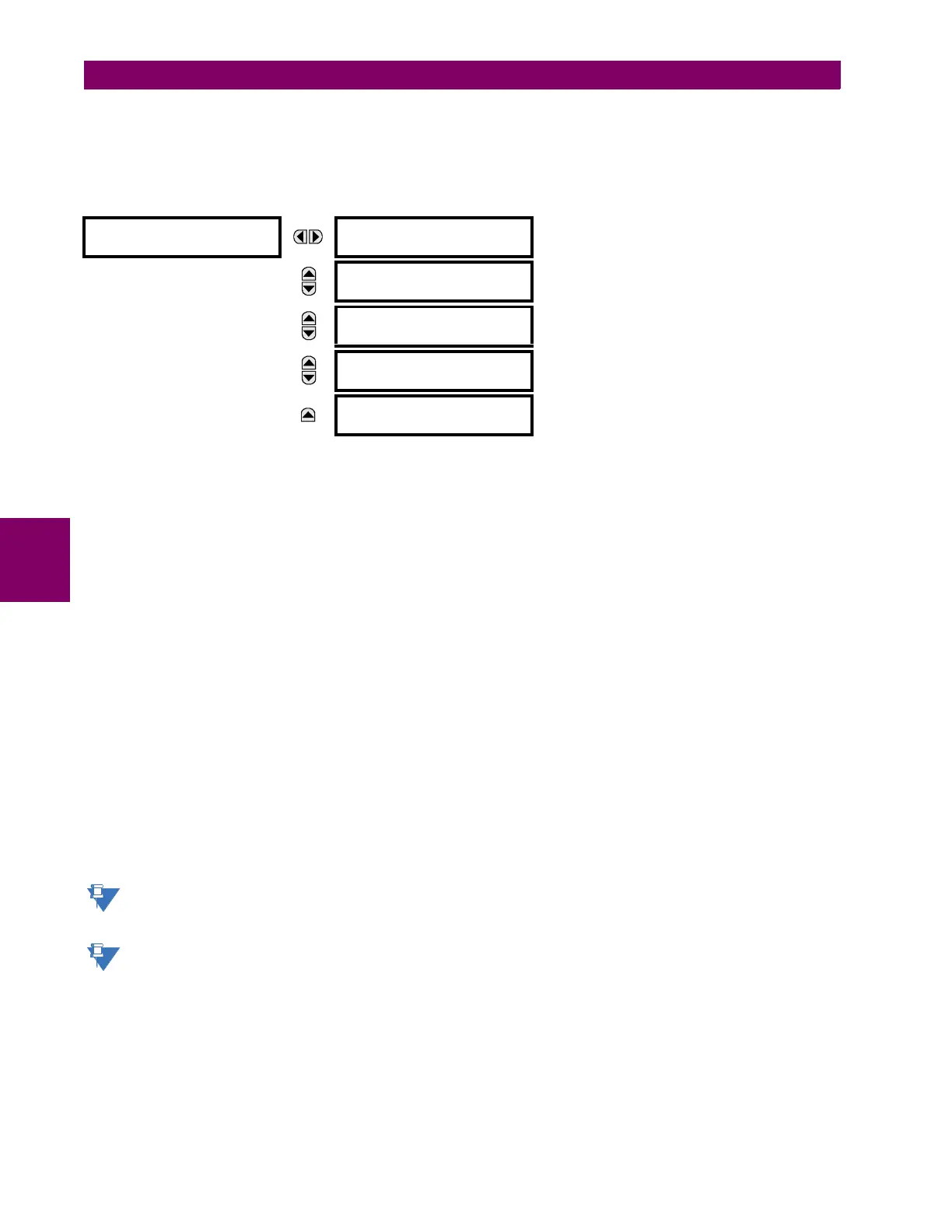5-34 C30 Controller System GE Multilin
5.2 PRODUCT SETUP 5 SETTINGS
5
The DNP ADDRESS setting is the DNP slave address. This number identifies the C30 on a DNP communications link. Each
DNP slave should be assigned a unique address.
The DNP NETWORK CLIENT ADDRESS settings can force the C30 to respond to a maximum of five specific DNP masters. The
settings in this sub-menu are shown below.
PATH: SETTINGS PRODUCT SETUP COMMUNICATIONS DNP PROTOCOL DNP NETWORK CLIENT ADDRESSES
The DNP TCP/UDP PORT NUMBER is for normal DNP operation. To close the port, set the port number to 0. The change takes
effect when the C30 is restarted.
The DNP UNSOL RESPONSE FUNCTION should be “Disabled” for RS485 applications since there is no collision avoidance
mechanism. The
DNP UNSOL RESPONSE TIMEOUT sets the time the C30 waits for a DNP master to confirm an unsolicited
response. The DNP UNSOL RESPONSE MAX RETRIES setting determines the number of times the C30 retransmits an unsolic-
ited response without receiving confirmation from the master; a value of “255” allows infinite re-tries. The DNP UNSOL
RESPONSE DEST ADDRESS is the DNP address to which all unsolicited responses are sent. The IP address to which unsolic-
ited responses are sent is determined by the C30 from the current TCP connection or the most recent UDP message.
The DNP scale factor settings are numbers used to scale analog input point values. These settings group the C30 analog
input data into the following types: current, voltage, power, energy, power factor, and other. Each setting represents the
scale factor for all analog input points of that type. For example, if the DNP VOLTAGE SCALE FACTOR setting is set to “1000”,
all DNP analog input points that are voltages will be returned with values 1000 times smaller (for example, a value of 72000
V on the C30 will be returned as 72). These settings are useful when analog input values must be adjusted to fit within cer-
tain ranges in DNP masters. Note that a scale factor of 0.1 is equivalent to a multiplier of 10 (that is, the value will be 10
times larger).
The
DNP DEFAULT DEADBAND settings determine when to trigger unsolicited responses containing analog input data. These
settings group the C30 analog input data into the following types: current, voltage, power, energy, power factor, and other.
Each setting represents the default deadband value for all analog input points of that type. For example, to trigger unsolic-
ited responses from the C30 when any current values change by 15 A, the
DNP CURRENT DEFAULT DEADBAND setting
should be set to “15”. Note that these settings are the deadband default values. DNP object 34 points can be used to
change deadband values, from the default, for each individual DNP analog input point. Whenever power is removed and
re-applied to the C30, the default deadbands will be in effect.
The C30 relay does not support power metering. As such, the
DNP POWER SCALE FACTOR and DNP POWER DEFAULT
DEADBAND settings are not applicable.
The C30 relay does not support energy metering. As such, the DNP ENERGY SCALE FACTOR and DNP ENERGY
DEFAULT DEADBAND
settings are not applicable.
The DNP TIME SYNC IIN PERIOD setting determines how often the Need Time Internal Indication (IIN) bit is set by the C30.
Changing this time allows the DNP master to send time synchronization commands more or less often, as required.
The DNP MESSAGE FRAGMENT SIZE setting determines the size, in bytes, at which message fragmentation occurs. Large
fragment sizes allow for more efficient throughput; smaller fragment sizes cause more application layer confirmations to be
necessary which can provide for more robust data transfer over noisy communication channels.
DNP NETWORK
CLIENT ADDRESSES
CLIENT ADDRESS 1:
0.0.0.0
Range: standard IP address
MESSAGE
CLIENT ADDRESS 2:
0.0.0.0
Range: standard IP address
MESSAGE
CLIENT ADDRESS 3:
0.0.0.0
Range: standard IP address
MESSAGE
CLIENT ADDRESS 4:
0.0.0.0
Range: standard IP address
MESSAGE
CLIENT ADDRESS 5:
0.0.0.0
Range: standard IP address

